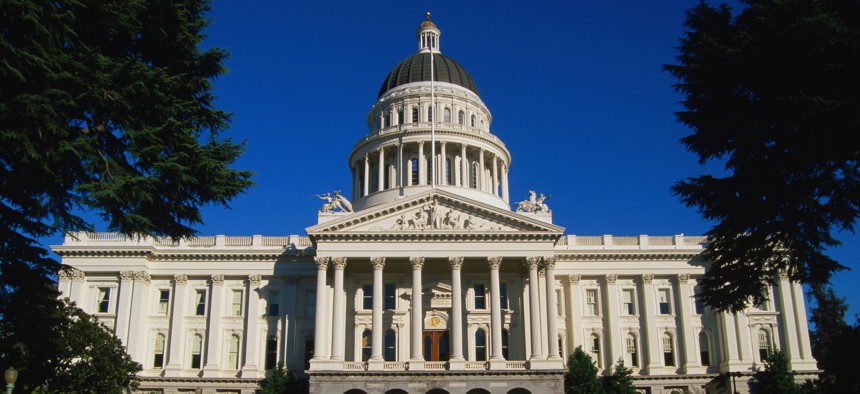California looks to preserve its role as ‘global hub’ for generative AI

Bruce Burkhardt/Getty Images
An executive order issued by Gov. Gavin Newsom looks to create replicable guidelines for the ethical and responsible use of generative AI in state government.
A new executive order on generative artificial intelligence from California Gov. Gavin Newsom seeks to walk a fine line between preserving the Golden State’s role as a “global hub” for the emerging field of technology and guarding against its many potential pitfalls and risks.
Newsom, who issued the order this week, said he hopes the “measured approach” will help establish nation-leading guidelines for the ethical and responsible use of generative AI in state government. The order notes that given how early generative AI is in its developmental life cycle, it is important for governments to start developing policies to ensure its benefits are equally distributed, harms are as minimized as possible and barriers to entry are lowered.
“We recognize both the potential benefits and risks these tools enable,” Newsom said in a statement accompanying his order. “We’re neither frozen by the fears nor hypnotized by the upside. We’re taking a clear-eyed, humble approach to this world-changing technology. Asking questions. Seeking answers from experts. Focused on shaping the future of ethical, transparent and trustworthy AI.”
California is home to 35 of the world’s top 50 AI companies and a quarter of the world’s AI patents, conference papers and companies. What’s more, the order touts the presence of two leading academic institutions for generative AI research: the University of California, Berkeley’s College of Computing, Data Science, and Society and Stanford University’s Institute for Human-Centered Artificial Intelligence.
It directs the state to enter into formal partnerships with the institutions to evaluate the impacts of generative AI on California, and recommend any efforts the state should make to ensure it continues to lead the industry.
Under the executive order, Newsom has mandated that state agencies and departments must produce a joint risk analysis report on the potential threats posed by generative AI, and how the new technology may exploit vulnerabilities in the state’s energy infrastructure. Agencies also are directed to develop a report outlining the most significant and beneficial uses of generative AI in an effort to improve the “efficiency, effectiveness, accessibility and equity of government operations.”
Furthermore, agencies have been asked to start sketching out guidelines for procurement, uses and workforce training in a bid to “support a safe, ethical and responsible innovation ecosystem inside state government.”
Newsom said that effort will build on existing frameworks like the White House’s Blueprint for an AI Bill of Rights and the National Institute of Standards and Technology’s AI Risk Management Framework. City-level efforts to establish use guidelines around generative AI are still rare, although some communities, including Boston and San Jose, California, have issued their own policies.
The executive order outlines the significant risks of generative AI, including malicious uses like bioterrorism, cyberattacks, disinformation, deception and discrimination or bias. Given these risks, the state has been tasked with creating a “risk-safety ecosystem,” and with partnering with private companies to train a new generation of workers who are well-versed in the technology.
A key mandate in the executive order calls for establishing criteria to track the impact of it on the workforce and on vulnerable communities. And Newsom has also sought through the order to guide the state government to learn more about and experiment with generative AI’s potential uses through pilot projects and sandboxes run by the California Department of Technology.
The order is intended to be a living document. Agencies are expected to periodically evaluate generative AI’s potential impacts and recommend any changes or updates as the technology itself evolves. They are also encouraged to engage with legislators in the state in the development of policy recommendations for the responsible use of AI, including guidelines, criteria and training.
Despite the risks, Newsom said the technology’s development is “comparable to the advent of the internet—and we’re only scratching the surface of understanding what GenAI is capable of.”






